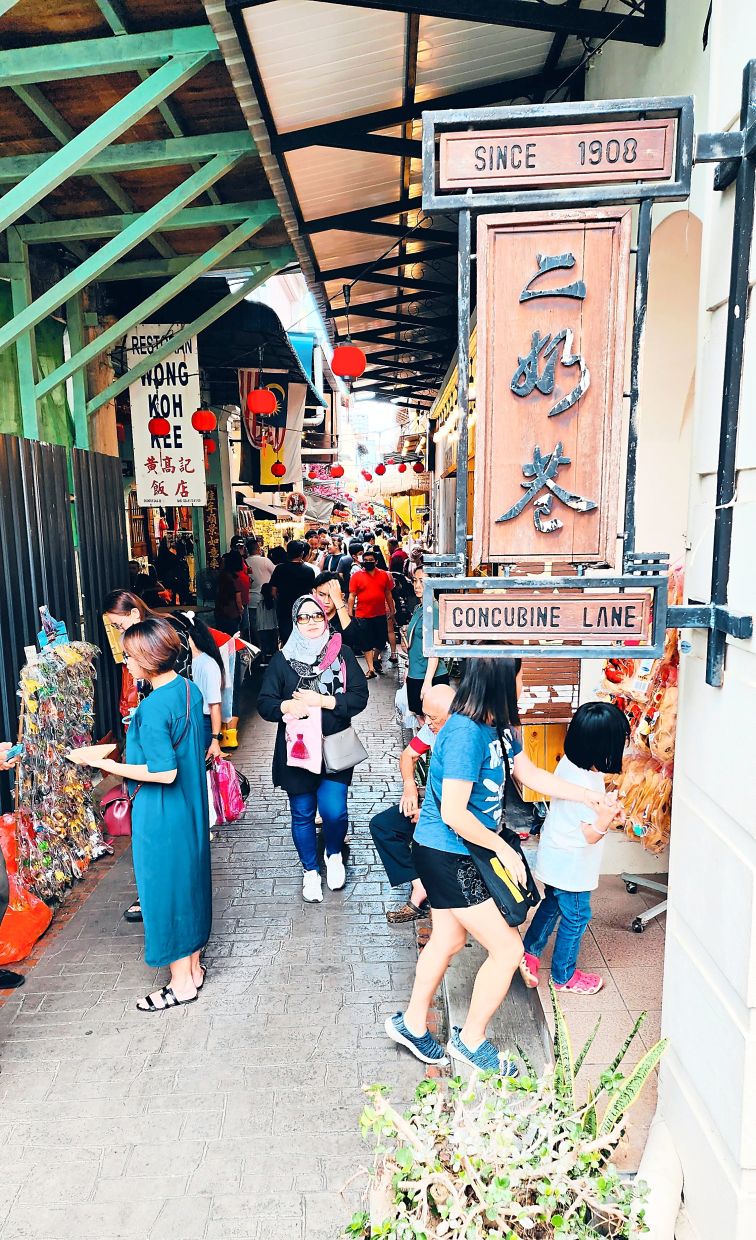The Star:
A tale of two cities
Tuesday, 06 Jun 2023

THE George Town versus Ipoh contest of tourism appeal rolls on healthily, and players on both sides have been busy.
New entrepreneurial efforts are sprouting in George Town, creating establishments that delight the younger generation.
Medical tourism is exploding in George Town too. Pulau Tikus, a suburb ringed by four large private hospitals, may be the only place in Malaysia where along a 400m walkway are eight pharmacies plus many shops selling orthopaedic and geriatric support equipment, hearing aids and health supplements.

Google Maps marks 13 dentists and orthodontists in Pulau Tikus. Families chattering away in Indonesian or Thai are commonly seen all over this suburb.
As for Ipoh, I make it a point to visit the Perak capital city at least once a month for the hawker food and local coffee.
Not that they are better than in Penang; just different. I enjoy tasting the difference.
Henry Ford already had the Model T in mass production by the time Ipoh began booming in the 1920s, so Ipoh’s main roads in the old section are a little wider. Roads in old George Town were built for bullock carts.
This makes driving around Ipoh’s heritage section less stressful, and there are more carparks too.
Meanwhile, the hawker “gangs” of Ipoh and George Town have their own arsenal.
In Ipoh, they excel at making soft wantan while Penang wantan mee hawkers like to press their wantan into chewy lumps and even deep-fry them so hard that they cut into the inner linings of our mouths when we bite into them.
Ipoh char koay teow is too soggy, in my opinion. I think we can stick to Penang’s variant for this.
The kari mee of George Town and Ipoh each hold their ground with unique characteristics that make it mandatory for food lovers to sample both and relish the contrast.

The grid of old roads around Ipoh’s bustling Concubine Lane is full of chic, novel cafes and bistros that attract a young crowd.
The downside of Ipoh hawker food is the price; a hawker food binge in this city hurts the wallet as much as eating in the Klang Valley.
A bowl of kai see hor fun (Cantonese for flat rice noodle soup served with shredded chicken) can cost RM8 even if you know how to use mobile apps and social media to seek out places where locals eat.
Penang’s ubiquitous koay teow th’ng can be had for just RM5.50 in places where locals congregate, but servings of Penang hawker food tend to be more snack-sized, so order a large bowl for RM6 if you need a more filling meal.
And wouldn’t you know it, Penang’s venerable Kek Lok Si has a “rival” in Ipoh called Kek Lok Tong.
The Chinese characters for both the “Kek Lok” are the same, meaning “great happiness”. “Si” means monastery and “tong” means cave.
While Kek Lok Si’s architecture is inspiring, Kek Lok Tong has assets that the former cannot beat.
Kek Long Tong really is a cave, with aeons-old stalagmites and stalactites and glistening cave walls shaped by centuries of trickling water.
The cave opens at the rear into a steep, narrow valley with two large ponds over 3,000sq metres each and populated by large turtles and fish, ringed with pleasant jogging tracks and a long foot reflexology path in between.
Ipoh has the upper hand of being much closer to Klang Valley, just as Melaka is never short of Singaporeans visiting to get away from their concrete jungles.
This makes inexpensive day trips into easy excursions.
Tourism players should know that domestic tourism is their bread and butter, and it behoves them to keep tabs on how other places of interest are doing.
Of late, media reports show large crowds and jams in the grid of roads around Ipoh’s Concubine Lane and their many cool, chic, novel cafes and bistros that appeal to the younger generation.
“My friends and I drive down to Ipoh regularly for day trips. It’s important for us to visit Ipoh regularly because as tourism players, we have to know how our neighbours are evolving,” said ex-president of Penang Tourist Guides Association PC Chin.
So to all Penangites involved in tourism in any way, drop by Ipoh regularly to feel the vibes, pick up some cues and keep the friendly competition going strong.
The downside of Ipoh hawker food is the price; a hawker food binge in this city hurts the wallet as much as eating in the Klang Valley.
A bowl of kai see hor fun (Cantonese for flat rice noodle soup served with shredded chicken) can cost RM8 even if you know how to use mobile apps and social media to seek out places where locals eat.
Penang’s ubiquitous koay teow th’ng can be had for just RM5.50 in places where locals congregate, but servings of Penang hawker food tend to be more snack-sized, so order a large bowl for RM6 if you need a more filling meal.
And wouldn’t you know it, Penang’s venerable Kek Lok Si has a “rival” in Ipoh called Kek Lok Tong.
The Chinese characters for both the “Kek Lok” are the same, meaning “great happiness”. “Si” means monastery and “tong” means cave.
While Kek Lok Si’s architecture is inspiring, Kek Lok Tong has assets that the former cannot beat.
Kek Long Tong really is a cave, with aeons-old stalagmites and stalactites and glistening cave walls shaped by centuries of trickling water.
The cave opens at the rear into a steep, narrow valley with two large ponds over 3,000sq metres each and populated by large turtles and fish, ringed with pleasant jogging tracks and a long foot reflexology path in between.
Ipoh has the upper hand of being much closer to Klang Valley, just as Melaka is never short of Singaporeans visiting to get away from their concrete jungles.
This makes inexpensive day trips into easy excursions.
Tourism players should know that domestic tourism is their bread and butter, and it behoves them to keep tabs on how other places of interest are doing.
Of late, media reports show large crowds and jams in the grid of roads around Ipoh’s Concubine Lane and their many cool, chic, novel cafes and bistros that appeal to the younger generation.
“My friends and I drive down to Ipoh regularly for day trips. It’s important for us to visit Ipoh regularly because as tourism players, we have to know how our neighbours are evolving,” said ex-president of Penang Tourist Guides Association PC Chin.
So to all Penangites involved in tourism in any way, drop by Ipoh regularly to feel the vibes, pick up some cues and keep the friendly competition going strong.
No comments:
Post a Comment